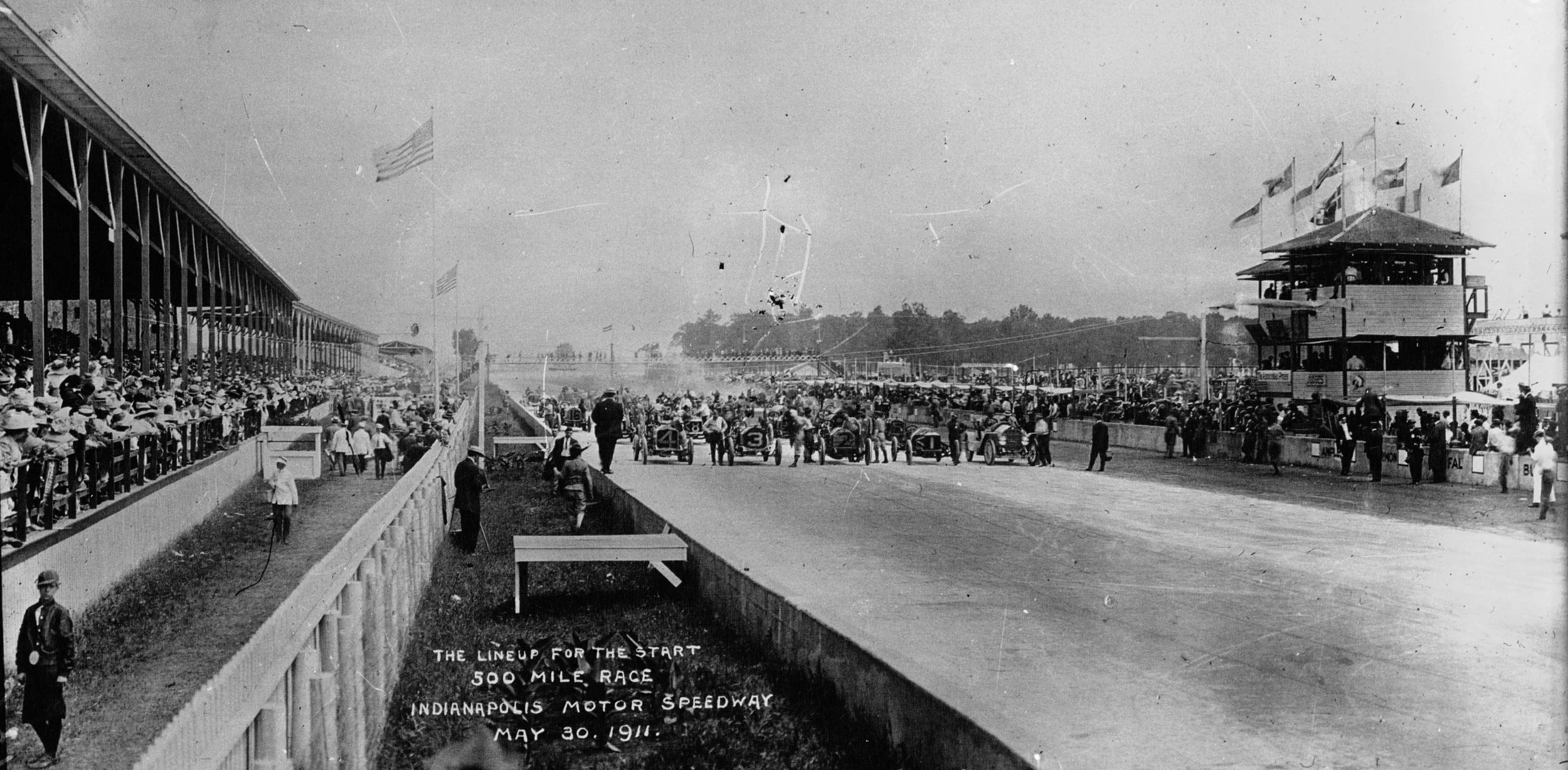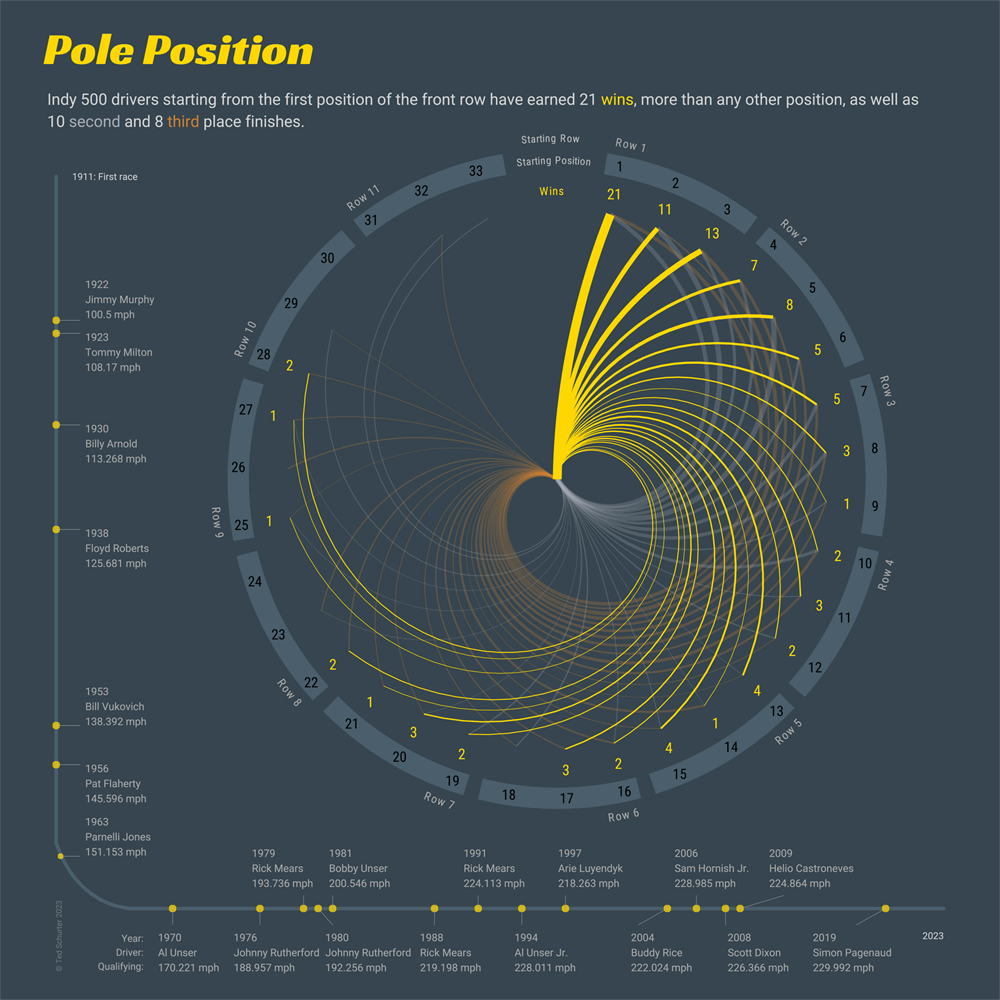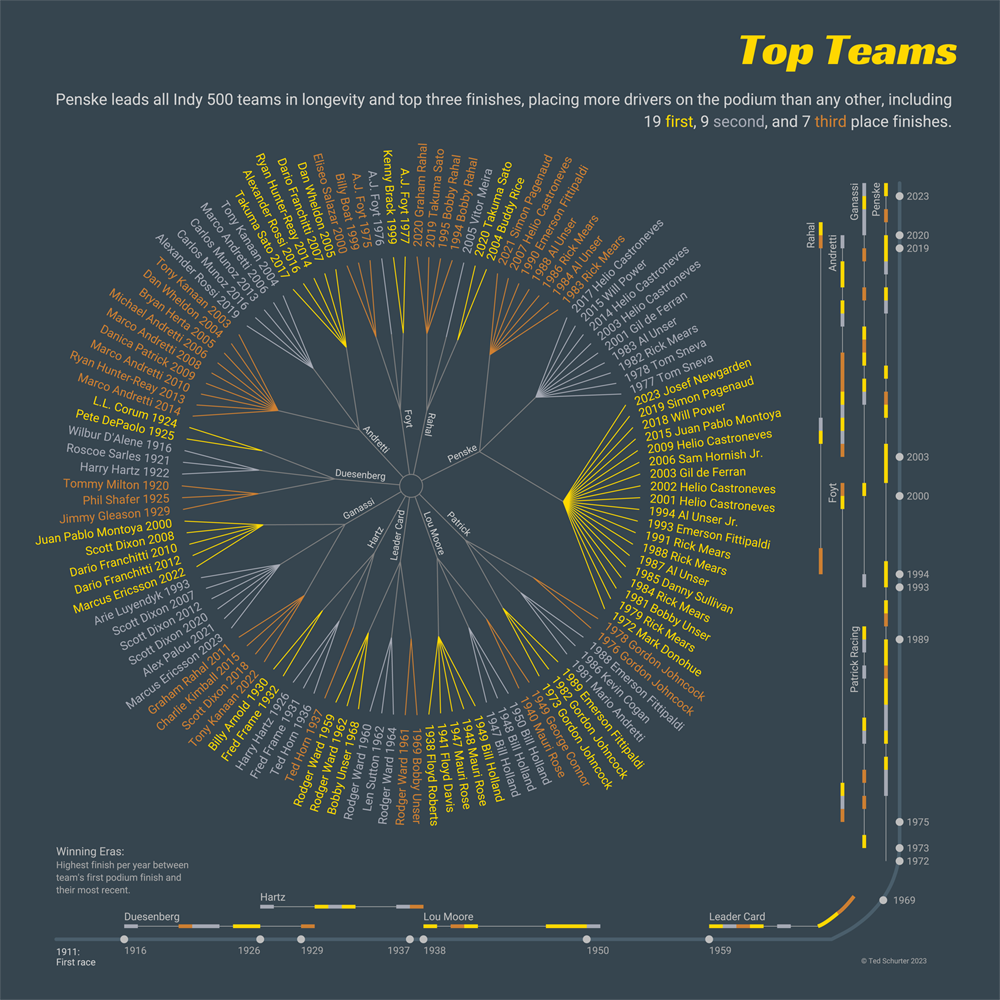Indianapolis 500
More Indiana residents were employed making carriages than cars when Carl G. Fisher and his partners began construction of the Indianapolis Motor Speedway’s 2.5-mile oval in 1909. The Indianapolis entrepreneur anticipated the automobile’s ascendance and recognized the benefits a better racing venue could bring. At the time, most car races were conducted on open roads and horse tracks, including the one a few miles away at the Indiana State Fairgrounds. "The average horse track is narrow, has fences that are dangerous, and is always dusty or muddy,” Fisher complained to Motor Age Magazine in 1906.
Though most guests at the 1905 Indiana State Fair likely arrived in horse-drawn carriages and wagons, automotive entrepreneur Carl G. Fisher realized their era was ending. He had co-founded the automotive headlight company Prest-O-Lite the previous year. Photo: Indiana Archives and Records Administration
A postcard from around 1910 of the Indiana State Fairgrounds racetrack shows the dirt surface and fragile fencing Fisher found objectionable. Image: Indiana Album Evan Finch Collection.
Fisher believed a proper track would give racers room to maneuver, enable higher speeds and provide a better spectator experience. Publicly showcasing cars’ increasing capabilities could help their sales, too, a fact not likely lost on the automotive businessman.
Drivers broke multiple speed records in front of tens of thousands of fans during the first three days of auto racing at Fisher’s track in August 1909. But deteriorating driving conditions and five fatalities revealed the need to replace the track’s crushed stone, oil and tar surface with something sturdier and safer. The solution, 3.2 million ten-pound bricks, were installed by December and inspired the track’s “Brickyard” moniker.
The refreshed track hosted multiple races in 1910 clustered into three-day events. They were replaced the following year by a single marquee event: the International Sweepstakes, an ambitious 200-lap race during Decoration Day weekend in May that became better known as the Indianapolis 500.
Cars line up for the first-ever International Sweepstakes at the Indianapolis Motor Speedway on May 30, 1911, the race that would become better known as the Indianapolis 500. Photo: Agence de presse Meurisse
Forty cars started that first race and for most of the next six plus hours the challenge of keeping accurate lap counts amid the chaotic crashes and pit stops was steeper than the track’s banked turns. Officially, the first of 12 drivers to finish the race and claim the $14,500 prize was Ray Harroun, though some accounts suggest Ralph Mulford was cruising around on what he thought was his “insurance” lap when Harroun was crowned.
After his win Harroun retired from racing but the Indy 500 continued through 1916 and then took a two-year hiatus during World War I. Indiana native Howdy Wilcox piloted his Peugeot to victory when the race resumed in 1919. That year nearly 30,000 of his fellow Hoosiers were employed building automobiles, triple the 1909 figure and the fourth-largest automotive workforce in the country, according to the US Census Bureau’s 1919 report on manufacturing.
Indiana had the fourth-largest manufacturing workforce in the country according to the U.S. Census Bureau’s 1919 report on manufacturing.
These days Indiana is much better known for its famous auto race than its auto manufacturing. Even casual fans are likely familiar with Indy legends like four-time winners AJ Foyt, Al Unser, Helio Castroneves and Rick Mears; or team owner Roger Penske and his 19 wins and 35 total podium finishes. I’ve created three data visualizations that detail the iconic winners and top Indy 500 finishers since 1911. Envisioned as a series of sequential panels or a combined piece, each section reveals a different dimension of winner data.
Pole Position illustrates that nearly one in 5 pole winners have gone on to victory and that winners have triumphed from 24 different starting positions. A timeline includes the year, driver and qualifying speed of the 21 times pole winners became race winners. It should be noted that though seven races have included more than 33 drivers, five occurred before 1934 and none of the extra starting positions produced a podium winner so the chart features the familiar 33 driver configuration with 11 rows of three drivers each.
Indy 500 winners have prevailed from 24 different starting grid positions but none more than the pole position. Graphic: Ted Schurter
Dominant Drivers details every driver that earned a podium finish and how many of each place they’ve won. Al Unser leads all drivers with 11 podium finishes.
Many of the drivers that earned a podium finish at the Indianapolis 500 have done so more than once. Graphic: Ted Schurter
Top Teams connects the year and driver of each podium finish to the respective team. Though only six teams have won the Indy 500 more than three times, many have won twice so inclusion for this dendrogram is based on a team’s total top-three finishes. A timeline shows the highest podium finish by year for each team and the span between their first and most recent top three appearance.
Roger Penske’s team has more longevity and more podium appearances than any other Indy 500 team. Graphic: Ted Schurter
The data used to create the visualizations can be found here.
All three panels assembled into one piece. Graphic: Ted Schurter








